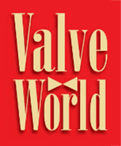As demand for electricity increases, there is a greater need to scale up renewable energy generation. The International Energy Agency (IEA) estimates that renewable energy will contribute 70% of the global energy mix by 2050 under a net zero scenario.¹
All text and images courtesy of Rotork

As per IEA World Energy Report 2022, this increased demand for electricity will require global power generation to scale almost by a factor of three. Electrification of energy systems is a key strategy for reaching net zero. It has the potential to reduce emissions and decarbonise the energy supply chain significantly.
Renewable energy is the key to reaching the goal of net zero emissions, and there is a need to look for greener power sources like solar and wind to achieve this. At the end of 2022, the total installed capacity of wind-generated power was approximately 906 gigawatts (GW), representing around 11% of the world’s total power generation capacity.² The (IEA) forecast that wind power capacity will grow to 7,795 GW by 2050, increasing its share of the global energy mix to 23%.
Wind power can be generated onshore or offshore. Offshore wind power is generated by wind turbines installed closer to shore or further out into deep sea. In 2022, the total capacity of offshore wind power was about 69 GW, which was approximately 8% of the total wind energy share. The International Renewable Energy Agency (IRENA) forecasts that offshore wind capacity will grow to 500 GW by 2030 (~16% of total wind energy share) and further to 2,500 GW by 2050 (~32% of total wind energy share).³
Europe currently has around 30 GW of installed offshore wind capacity, which is predicted to grow to about 200 GW by 2030.4 Most of this growth is expected to come from the North Sea, which is a shared resource that can help Europe achieve its energy reliability and net zero goals.


Offshore High Voltage Direct Current (HVDC) platform challenges
Offshore wind farms in the North Sea are being built further away from the shore (100-150 km). Transporting the electricity generated by the wind turbines over long distances is a challenge.
When a wind farm is within 80 km of the shoreline, electricity can be transmitted to the shore in alternating current (AC) format. However, for wind farms located more than 80 km from the shore, additional equipment is needed to prevent significant power losses during transmission. Additional equipment includes an offshore HVDC converter station, a high-voltage cable system, and an onshore high-voltage alternating current (HVAC) converter station.
The offshore HVDC converter station converts the AC electricity generated by the wind turbines to DC electricity. DC electricity has lower transmission losses than AC electricity, so it is more efficient to transmit over long distances. Once the electricity reaches the onshore HVDC converter station, it is converted back to AC electricity and fed into the grid.
The size of a converter station depends on how many wind turbines are connected to it for power conversion. Converter stations can range in size from 520 MW to 2 GW. During power conversion, converter stations produce heat as a byproduct. To keep the system running continuously, the heat-emitting equipment, called thyristors/rectifiers, must be cooled constantly.
The most effective way to cool large HVDC converter stations is to use deionised water in a closed system. The deionised water is then cooled by seawater pumped through a heat exchanger, which absorbs heat from the deionised water. In some systems, chemicals such as glycol are mixed with the water to prevent freezing.
The value of Rotork intelligent actuation
The flow control of cooling fluids (seawater, deionised water, and glycol) is critical for the normal operation of the platforms. Any technical faults with controlling parameters such as ambient temperature, humidity, and pressure within these platforms could cause the entire wind farm to fail.
Rotork IQ3 Pro intelligent electric valve actuators are suitable for this safety-critical application because they are highly reliable and have intelligent features that can help prevent unplanned downtime. They also require only an electric power supply, eliminating the need for auxiliary equipment that can add weight and complexity to the platform.
Rotork CVA electric actuators are ideal for applications that require continuous modulation. They can deliver continuous, repeatable modulating control with a programmable fail-to-position option. Both IQ3 Pro and CVA actuators have advanced and user-friendly programming and commissioning technologies, as well as comprehensive data logging, diagnostic, and asset management capabilities.
Rugged, double-sealed IP66/68 enclosures enhance long-term reliability in even the harshest environments, such as those often encountered in offshore applications. This protection means that there is no need for a heater, even down to -50 °C.
HVDC platforms also have safety-critical applications within their auxiliary power units, where they need to reach a failsafe position. For these requirements, Rotork offers two solutions: the IQ3 Pro electric actuator with a shutdown battery and the SI3 electro-hydraulic actuator with a mechanical spring-based design.
The IQ3 Pro Shutdown Battery is the industry-leading design with explosion-proof certification and is capable of continuing to operate normally in uninterruptible power supply (UPS) mode (multiple open/close cycles) until the battery charge is depleted. The SI3 actuator uses the same technology as the IQ3 Pro, which helps to standardise the platform’s control system. The compactness and weight of these actuators make them a preferred solution for offshore platforms.


Digital innovation to improve platform maintenance
Another challenge for any equipment on an HVDC platform is that it is unmanned and fully controlled from the shore. This means that access to this equipment is only possible once a year during the platform’s planned maintenance.
This is where Rotork’s Intelligent Asset Management (iAM) and Lifetime Management solutions can help. Rotork iAM is a cloud-based system that provides platform end users advanced condition monitoring of their intelligent actuation and flow equipment. IQ3 Pro intelligent actuators are equipped with data loggers that can record up to 3,000 historical events, which provides a comprehensive record of actuator performance.
Users can download the data logs and send them to the iAM system. It helps reduce unplanned downtime by using analytics based on data taken from intelligent actuators to create a maintenance plan. The key areas of information taken from data loggers and uploaded to iAM are torque, temperature, vibration and event log information and other secondary metrics such as partial stroke profile, maximum starts per hour and motor run time.
It is designed to provide platform owners with constant support in managing the life cycle of their assets.
Conclusion
Offshore wind energy will play a critical role in achieving a sustainable and renewable power generation mode. This is key to limiting global warming to 1.5 °C above the current atmospheric temperature.
As offshore wind generation moves further from shore, converter platforms and extensive cable networks are essential to minimise transmission losses before the electricity reaches the onshore grid. These converter platforms transform the low-voltage electricity generated by turbines into the high-voltage electricity required for transmission, ensuring efficient power delivery over long distances.
HVDC platforms have grown in size and can now handle up to 2 GW of power. This means they need a carefully designed cooling circuit to manage the heat generated by the thyristors/rectifiers. Additionally, the operational management of HVDC offshore platforms is shifting to remote onshore locations. Rotork’s range of intelligent electric actuators (isolation and continuous modulating types) and its service offering, including Lifetime Management and iAM, are well-suited for these challenging applications on unmanned platforms in harsh environments.
They give users operational insights into the health of their assets and planned maintenance capabilities, which reduces the lifecycle cost of managing these platforms throughout their 25-year lifespan.
About the author
 Hari Babu joined Rotork at the beginning of 2022 as Head of Strategy for the Water and Power division. He has a bachelor’s degree in mechanical engineering and an MBA from the University of Buffalo, USA. In his current role, Hari works with the commercial leadership team to develop a strategic plan to achieve organic and inorganic growth for the division.
Hari Babu joined Rotork at the beginning of 2022 as Head of Strategy for the Water and Power division. He has a bachelor’s degree in mechanical engineering and an MBA from the University of Buffalo, USA. In his current role, Hari works with the commercial leadership team to develop a strategic plan to achieve organic and inorganic growth for the division.
About this Technical Story
This Technical Story is an article from our Valve World Magazine, February 2024 issue. To read other featured stories and many more articles, subscribe to our print magazine. Available in both print and digital formats. DIGITAL MAGAZINE SUBSCRIPTIONS ARE NOW FREE.
“Every week we share a new Technical Story with our Valve World community. Join us and let’s share your Technical Story on Valve World online and in print.”

